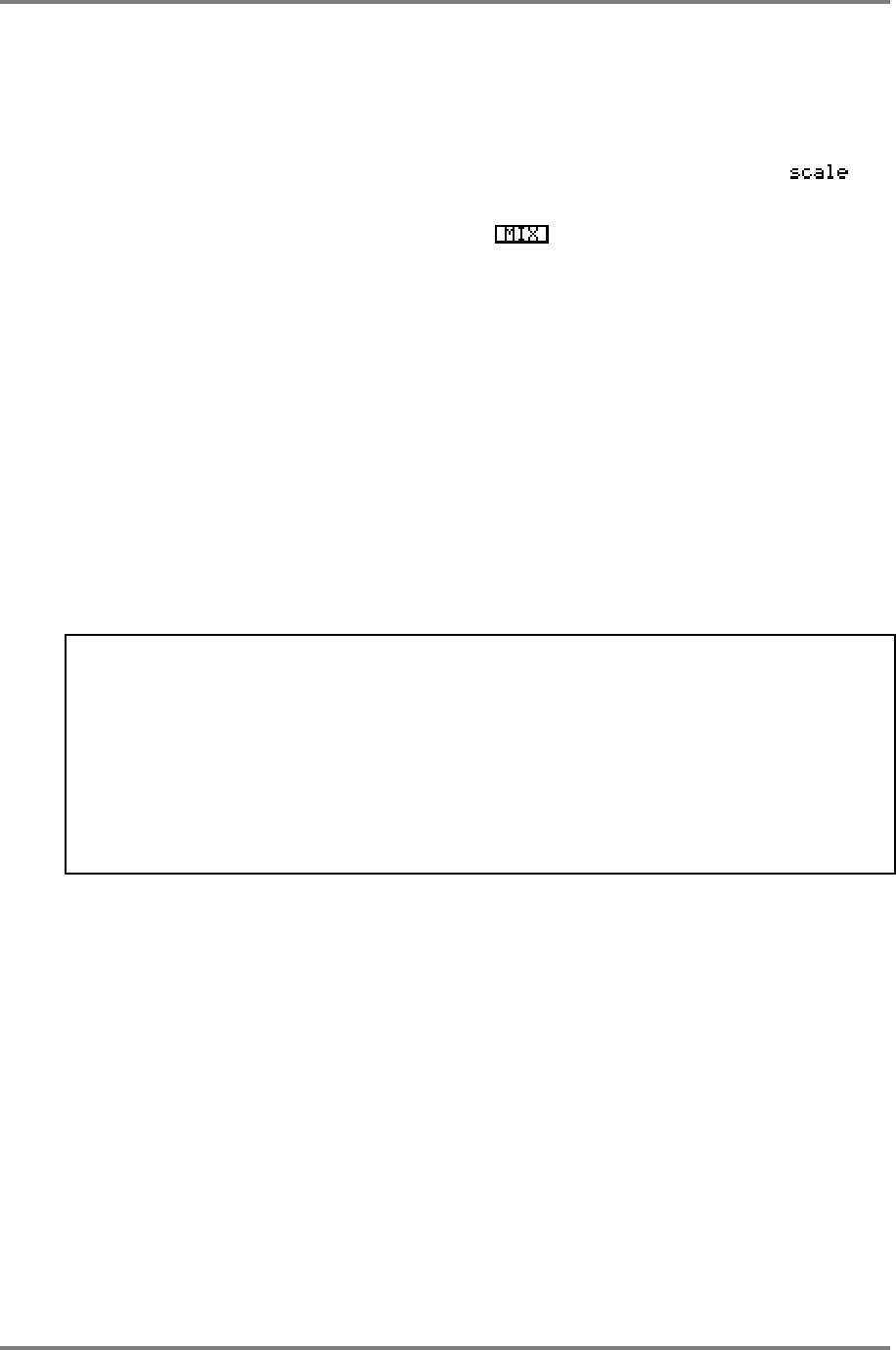
EDIT SAMPLE
CD3000XL OperatorÕs Manual Page 163
MIXING AND LAYERING SAMPLES
It is also possible to ‘stack’ samples on top of each other. This can be an effective way of
layering sounds without eating into polyphony. The same principles apply as above. Select
sample A and B and create a new sample J (or use an unwanted existing sample). You may set
the portion you want to mix together (for example, you may want to layer the attack of one
sound directly on top of another) and also set the levels and relative balance in the field
(please be especially careful here - because you are combining two samples together, the
levels will naturally go up. If anything, you may need to use the scale parameters to turn them
down). Once you’re happy with everything press . If the J sample already exists, you will
be prompted and you should respond accordingly and, after a few seconds, you will be able to
play the sound from the ENT/PLAY key.
You may repeat these techniques using the J sample as the basis for a new splice, crossfade or
layer. For example, you could:
• Crossfade a timpani strike with a deep string orchestra. Use that sample, for example, to
crossfade with a big vocal chorus chord and use the result of that to crossfade with a large
orchestral finale.
• Crossfade a thick synth bass with a string pad. Use that to crossfade with a resonant filter
sweep sound and crossfade the result of that with some strange percussion loop.
• Layer some strings on top of a piano. Use the new sample as the basis onto which you
layer a marimba.
• Keep layering different synth string sounds on top of each other for a huge pad sound.
NOTE 1. When mixing, splicing or crossfading samples in this way, any loops which were
present in the original samples (A and B) will not be played back when you play back J. You
must reset loops in J if you want them.
NOTE 2: The samples always use their base note (i.e. the note they were sampled at) when
employing any of these techniques. In other words, a string sound sampled at C3 and layered
or crossfaded with a choral sound sampled at G3 would be a fifth apart. This cannot be
corrected, even through tuning it in the MORE page.
NOTE 3: It goes without saying that you need to have sufficient memory available to create
these new spliced or mixed samples. You will be reminded by the prompts if you haven’t!
Though the process of creating the sound you want may take some time, it’s possible you may
discover some new sounds along the way which weren’t quite what you were expecting, but
could find a place in your work. The type of sounds created here can be long evolving sounds
which may find a place in soundtrack work as they can be very dramatic.


















